How to Clean Up Your Gmail Inbox (Fast & Easy 2025 Guide!)
Get Rid of Junk Emails in Minutes
Use InboxPurge to quickly unsubscribe, delete old emails, and keep your inbox tidy
Clean My Inbox NowYour Gmail inbox can quickly become overwhelming with unread emails, spam, and promotional messages. A cluttered inbox makes it harder to find important emails and can slow down your workflow.
This guide will show you how to clean up Gmail fast, including deleting unnecessary emails, setting up filters, removing large attachments, unsubscribing from unwanted emails, and keeping your inbox organized with InboxPurge.
1. How to Delete Unnecessary Emails in Gmail
Use Gmail’s 'Select All' Feature for Bulk Deletion
If you need to delete hundreds or thousands of emails at once, Gmail’s Select All feature can help:
- Open Gmail and click the checkbox at the top left to select all emails on the current page.
- Click "Select all conversations that match this search" if you want to delete more than the visible emails.
- Click the trash can icon to delete them.
📌 Example Screenshot:
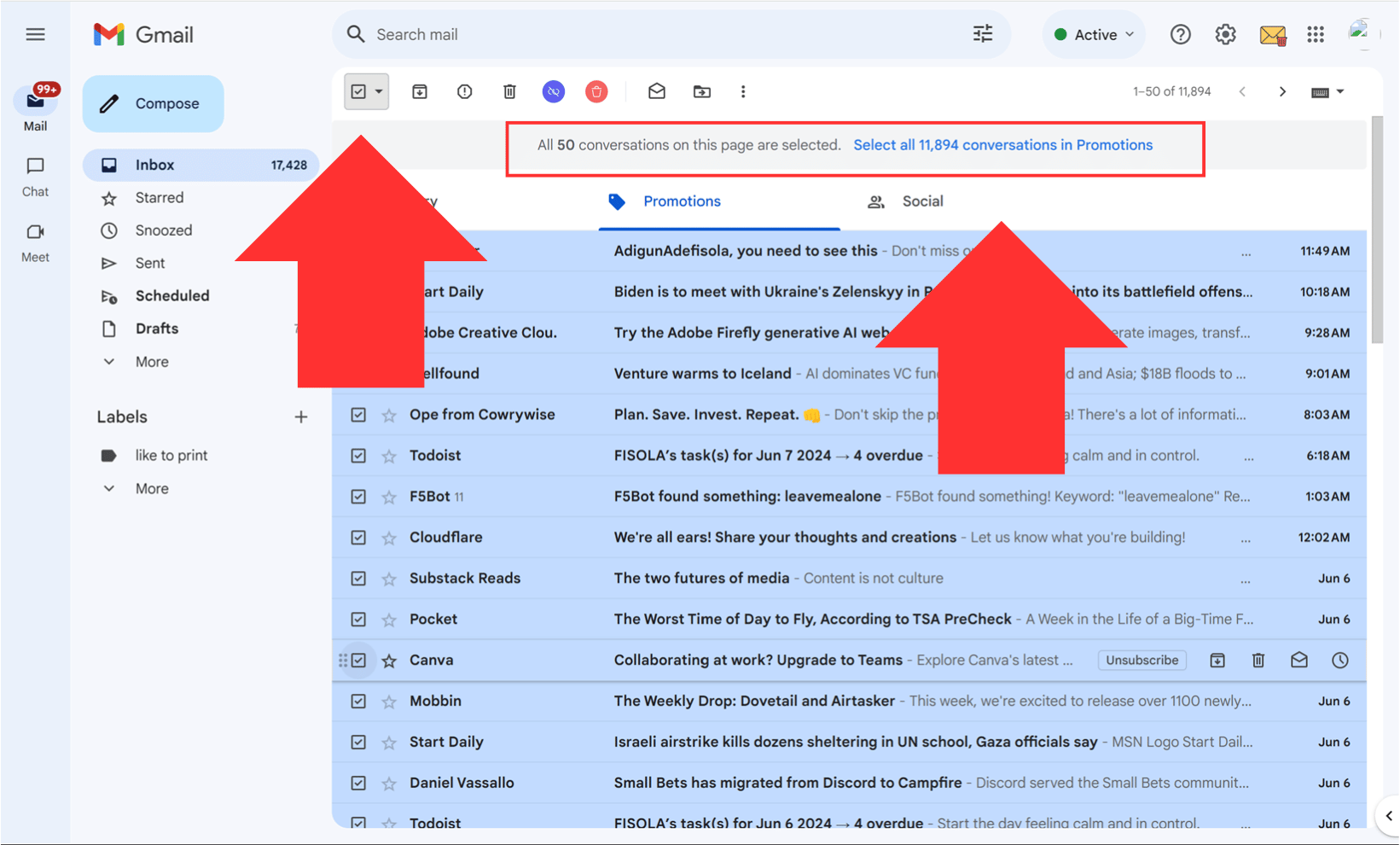
Delete Emails by Sender or Date
To delete emails from a specific sender or within a date range, use Gmail’s search bar:
- Find emails from a sender: Search
from:[email protected] - Delete old emails: Search
before:2022/01/01to find all emails before January 1, 2022. - Delete recent emails: Search
after:2023/01/01to filter by newer emails.
📌 Example Screenshot:
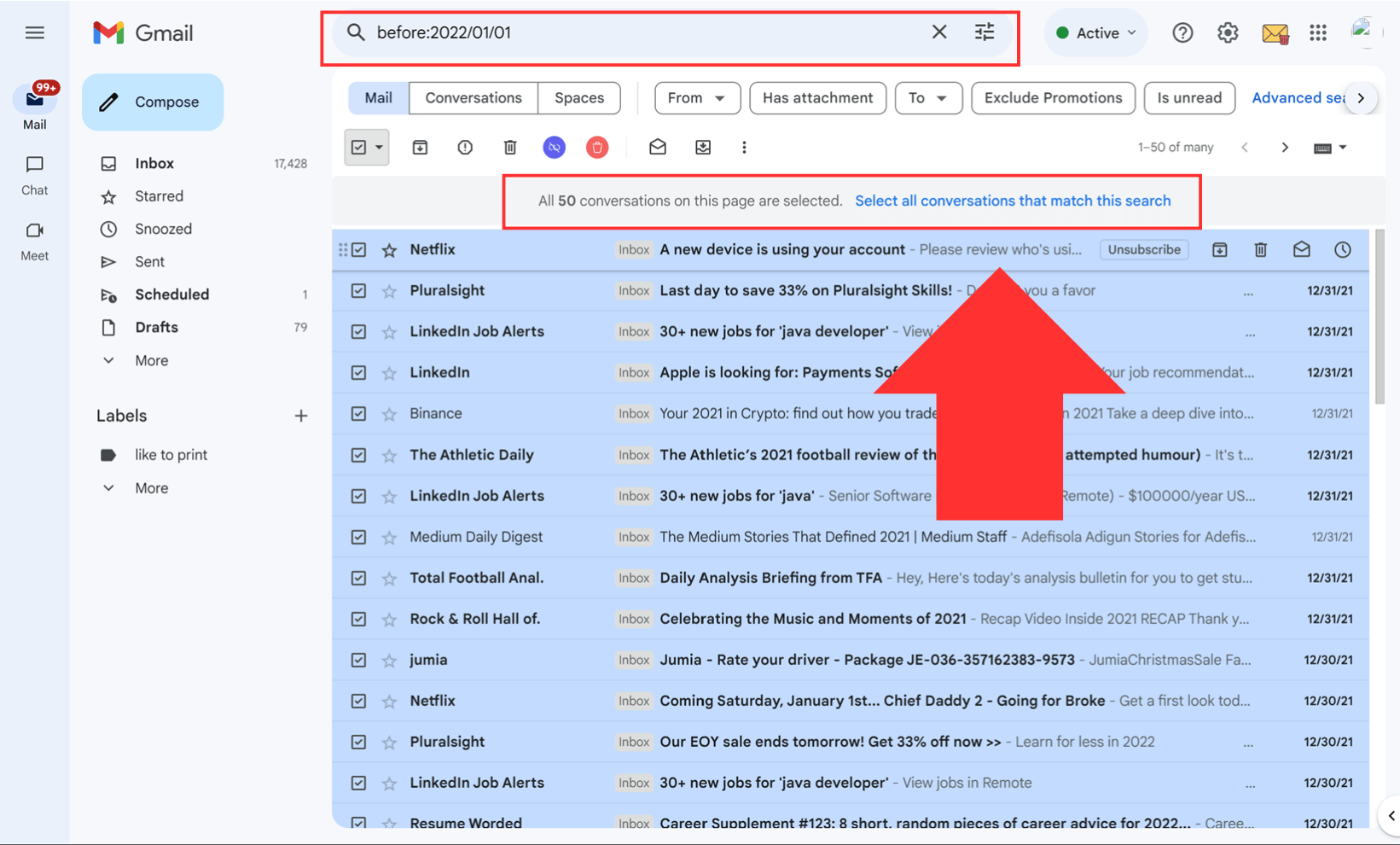
Bulk Delete Emails Using InboxPurge
If manually selecting emails feels overwhelming, InboxPurge offers a faster way to delete unwanted emails in bulk.
How to Use InboxPurge for Bulk Email Deletion:
- Install the InboxPurge Chrome extension.
- Open Gmail and activate the InboxPurge sidebar.
- InboxPurge will display a list of your top email senders (sorted by frequency).
- Select senders you want to remove and click "Delete".
📌 Example Screenshot:
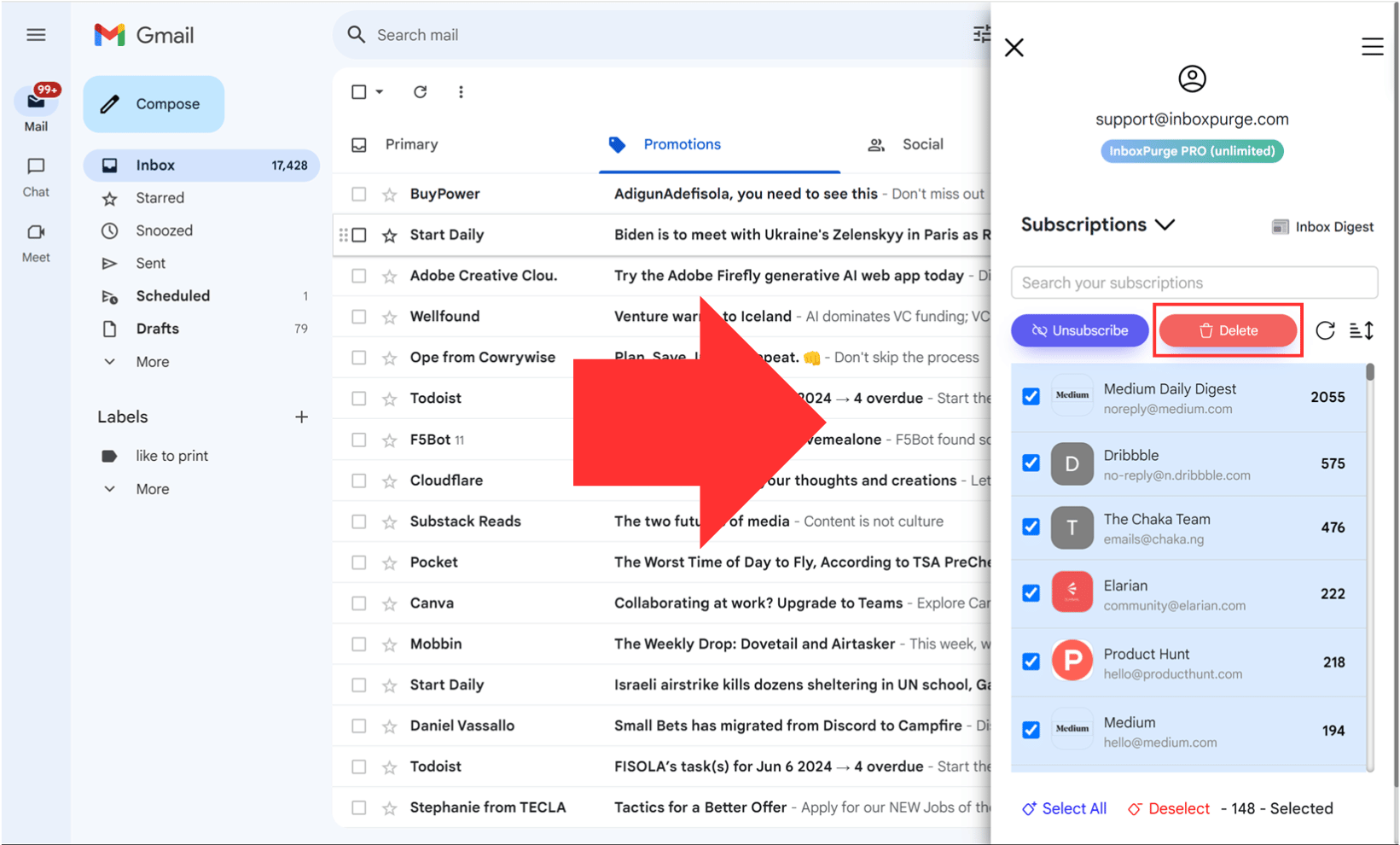
✅ Best for: Deleting emails from newsletters, marketing senders, and bulk email senders with one click.
2. How to Organize Your Gmail Inbox with Labels and Categories
Create and Assign Labels for Easy Organization
Gmail labels help categorize emails without moving them to separate folders.
How to Create a Label in Gmail:
- Go to the left panel in Gmail and click "Create new label."
- Name your label (e.g., "Work," "Finance," or "Newsletters").
- Click "Create."
- To assign a label, select an email, click the label icon, and choose a label.
📌 Example Screenshot:
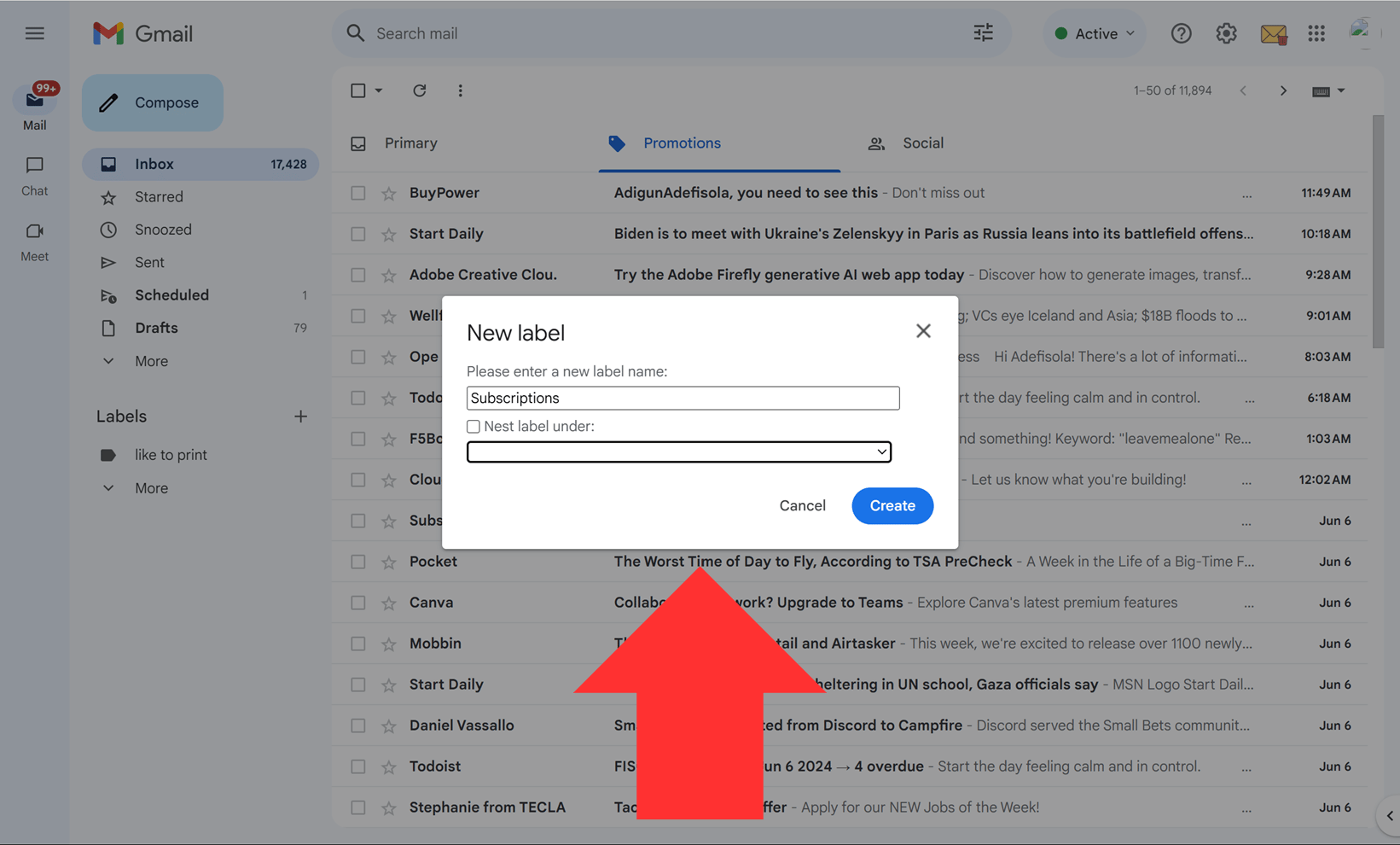
Use Gmail’s Categories for Automatic Sorting
Gmail automatically sorts emails into Primary, Social, Promotions, Updates, and Forums categories.
How to Customize Gmail Categories:
- Click the gear icon in Gmail and select "See all settings."
- Go to the "Inbox" tab and check/uncheck categories you want to use.
- Save changes, and Gmail will automatically sort emails into those tabs.
📌 Example Screenshot:
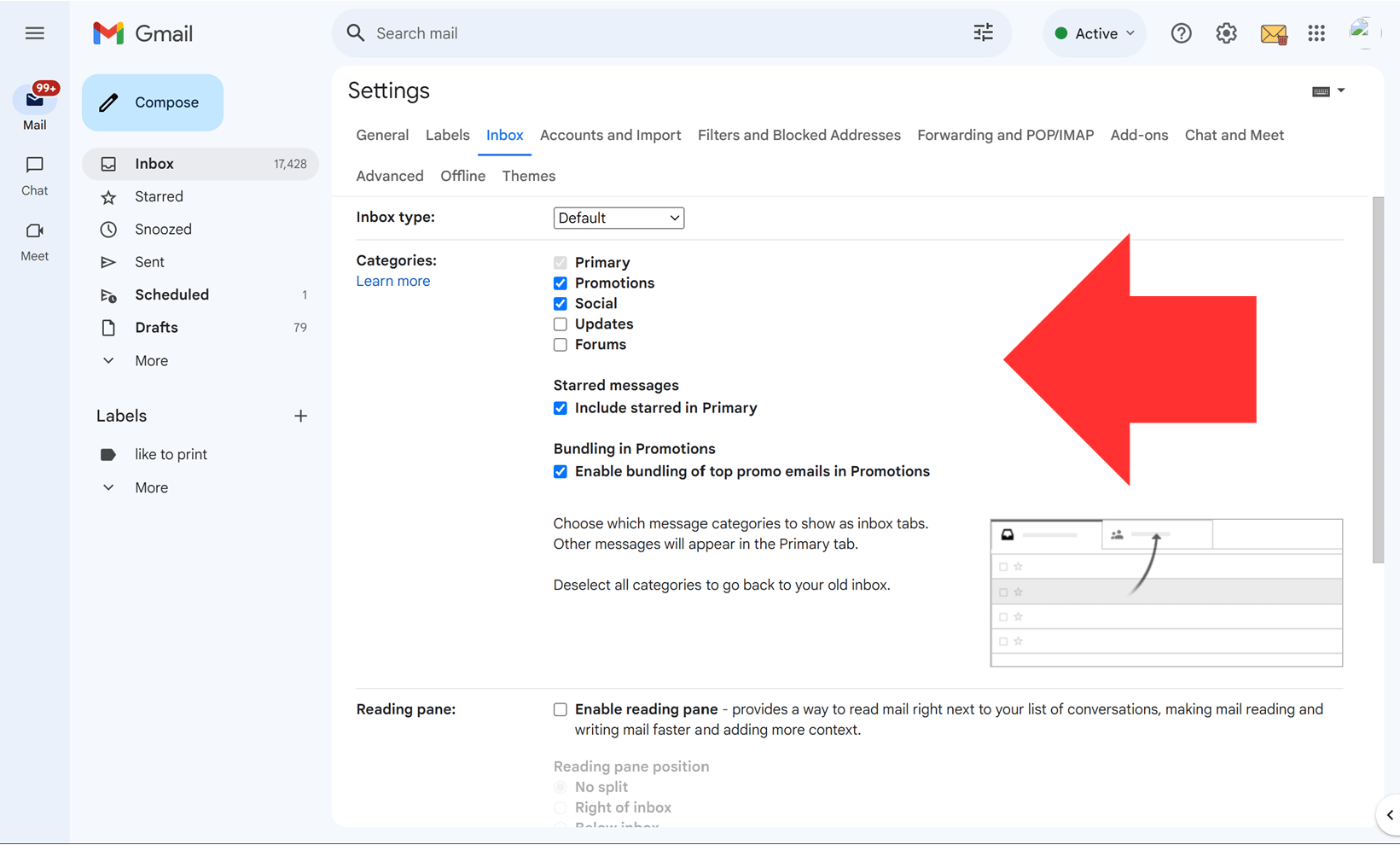
✅ Best for: Automatically keeping promotions and social emails separate from important messages.
3. How to Set Up Gmail Filters for Automatic Email Management
Filters allow Gmail to automatically sort, delete, or archive emails based on criteria like sender, subject, or keywords.
How to Create a Gmail Filter:
- Click the down arrow in the search bar to open advanced search options.
- Enter your criteria (e.g., from:amazon.com or subject:invoice).
- Click "Create filter" and choose an action (apply label, delete, or archive).
- Click "Create filter" to save it.
📌 Example Screenshot:
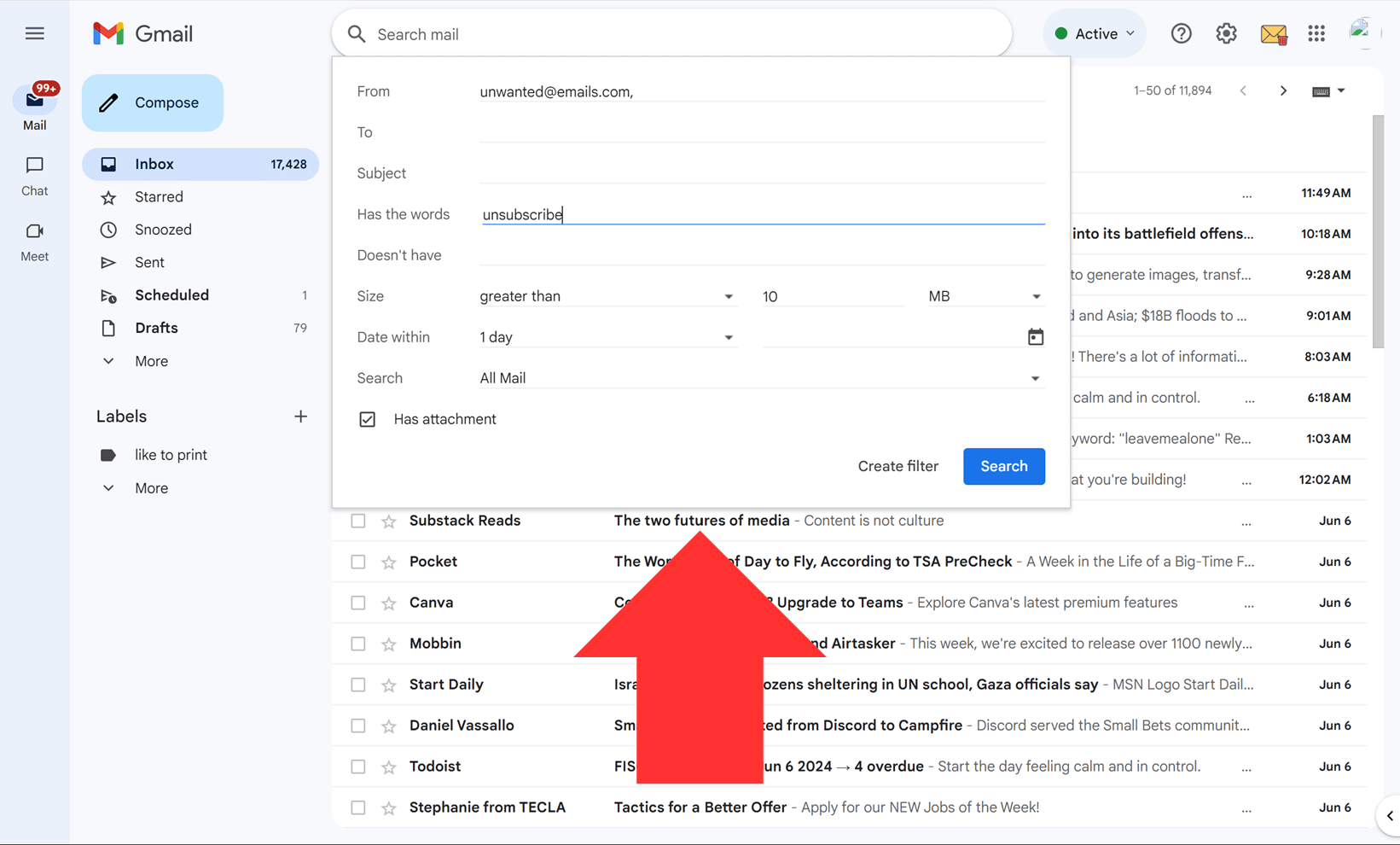
✅ Best for: Automatically filtering out newsletters, receipts, and low-priority emails.
4. How to Remove Large Attachments to Free Up Gmail Storage
Large attachments take up Gmail storage quickly. To find and delete them:
- In Gmail’s search bar, type
larger:10M(for emails larger than 10MB). - Review and delete unnecessary emails with attachments.
- Save important attachments to Google Drive before deleting.
📌 Example Screenshot:
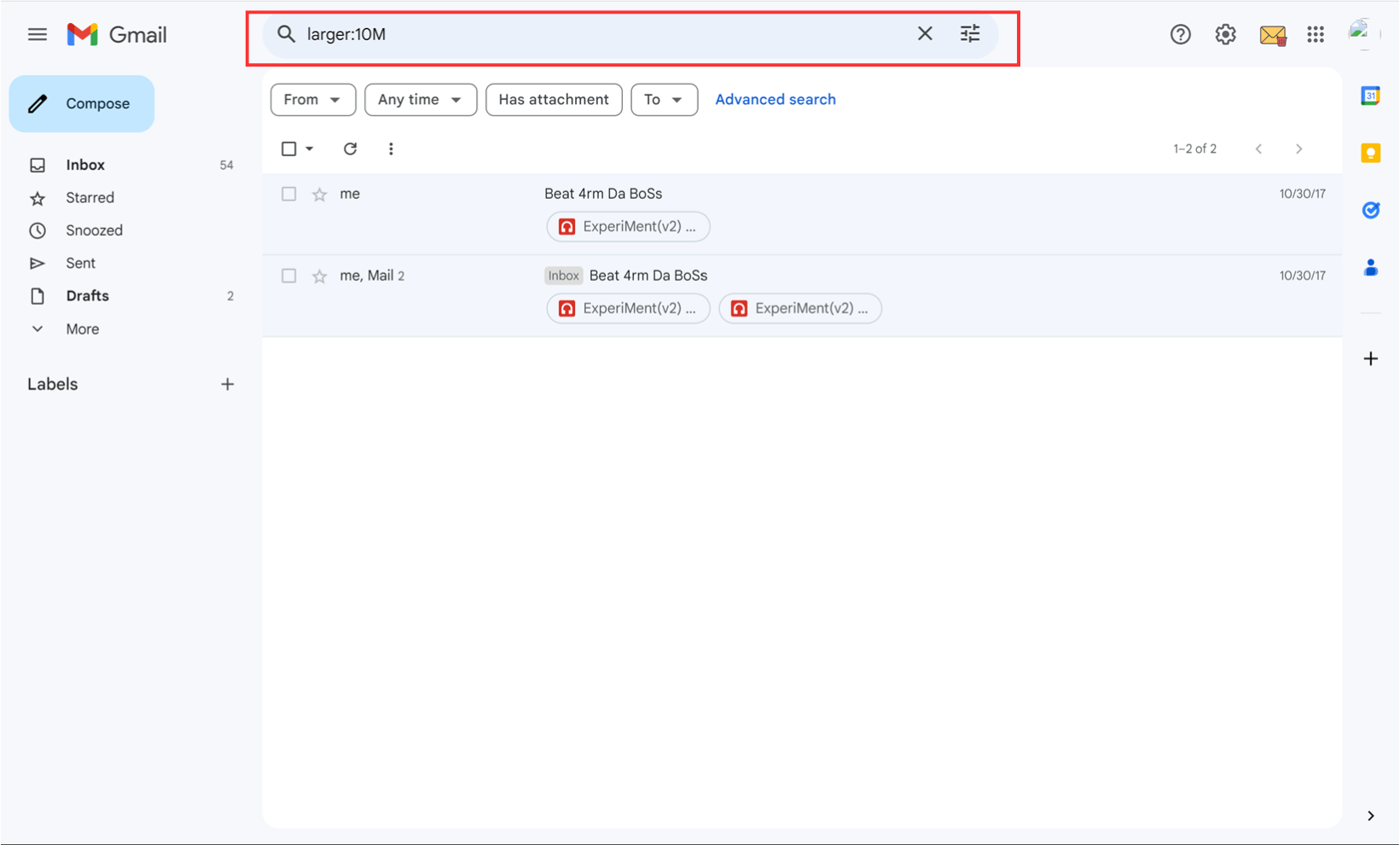
✅ Best for: Freeing up Gmail storage without deleting important emails.
5. How to Mass Unsubscribe from Unwanted Emails in Gmail
Marketing emails and newsletters clutter inboxes quickly. Gmail allows you to unsubscribe manually, but InboxPurge offers a faster bulk unsubscribe option.
Manually Unsubscribe from Emails in Gmail
- Open a marketing email.
- Look for the "Unsubscribe" link at the top or bottom of the email.
- Click it and confirm the unsubscribe request.
📌 Example Screenshot:
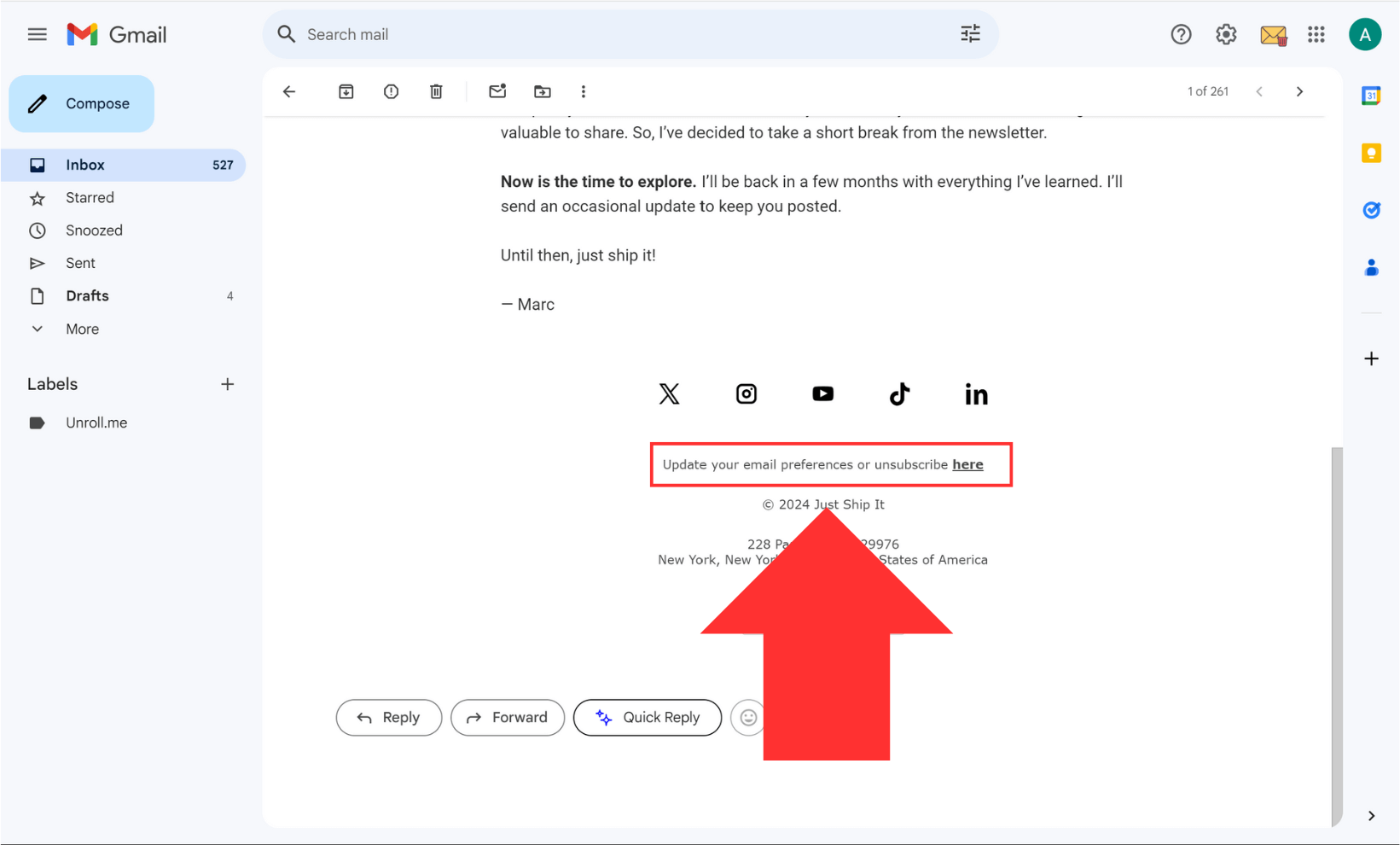
✅ Best for: Removing individual email subscriptions manually.
Mass Unsubscribe from Emails Using InboxPurge
For bulk unsubscribing, InboxPurge automates the process:
How to Use InboxPurge for Mass Unsubscribing:
- Install the InboxPurge Chrome Extension.
- Open Gmail and access the InboxPurge sidebar.
- See a list of email subscriptions sorted by sender.
- Click "Unsubscribe" to remove multiple senders at once.
📌 Example Screenshot:
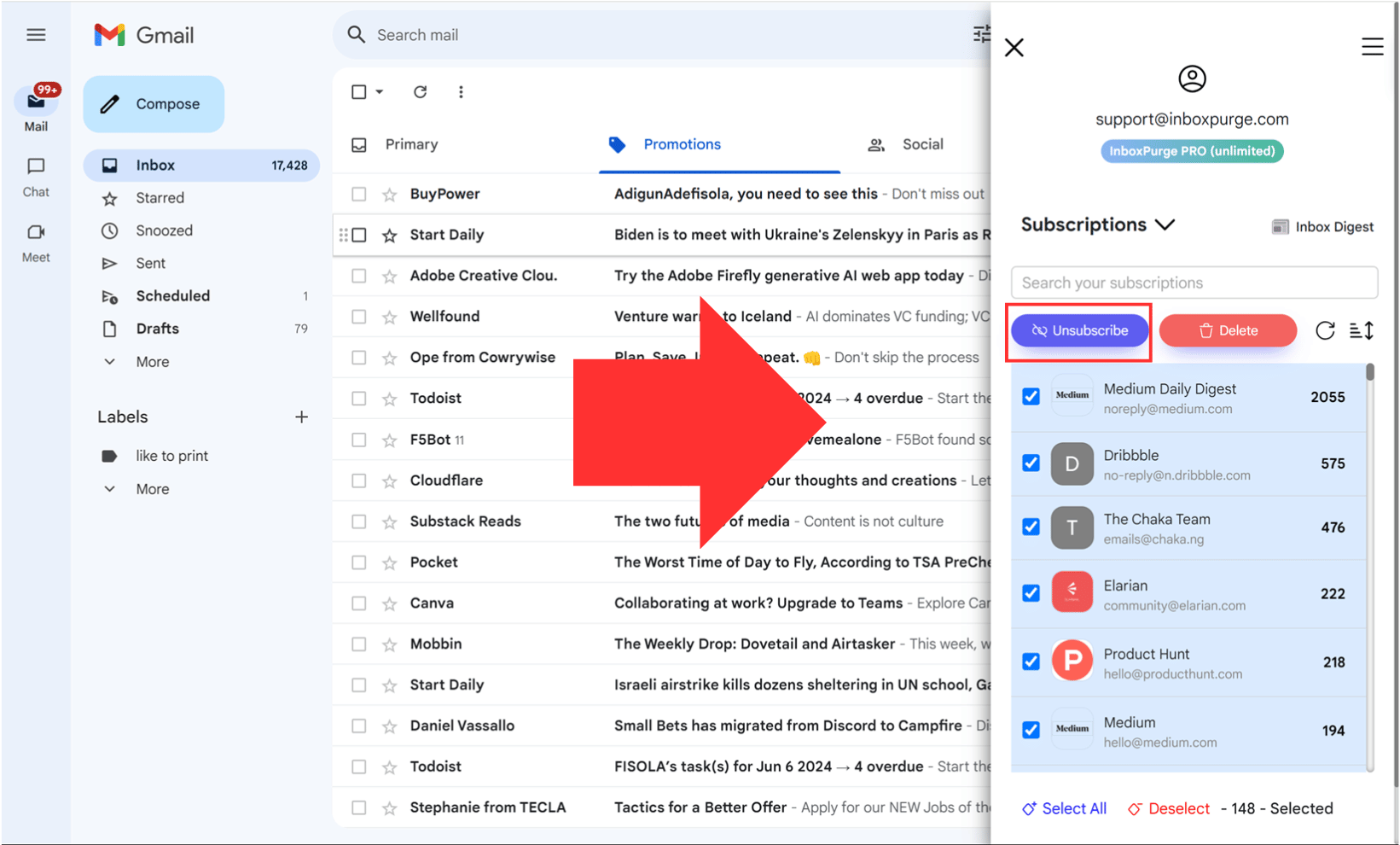
✅ Best for: Unsubscribing from multiple emails quickly without manually opening each one.
6. How to Maintain a Clean Gmail Inbox
Schedule Regular Inbox Cleanups
✔ Delete old emails once a month to prevent inbox buildup.
✔ Use filters to automatically sort and manage new emails.
✔ Regularly check Gmail storage and remove large files.
Adopt Daily Email Management Habits
✔ Unsubscribe from emails you don’t need.
✔ Use labels to keep emails organized.
✔ Archive or delete emails you’ve already read.
Final Thoughts: Keep Your Gmail Inbox Clean & Organized
A clutter-free Gmail inbox improves productivity and email efficiency. By following these steps and using tools like InboxPurge, you can:
✔ Mass delete old emails
✔ Unsubscribe from unwanted emails
✔ Organize emails with filters and labels
📌 Try InboxPurge today and take control of your Gmail inbox! 🚀
Frequently Asked Questions (FAQs) about Cleaning Up Your Gmail Inbox
1. What's the difference between archiving and deleting emails in Gmail?
Archiving removes emails from the main inbox view but retains them in the system, allowing you to access them later. Deleting emails moves them to the trash, and they are permanently removed after 30 days or when the trash is manually emptied.
2. How does InboxPurge help in cleaning my Gmail inbox?
InboxPurge is a Chrome extension that helps you in mass unsubscribing, deleting, and blocking emails with just one single click, making it a valuable tool for those looking to save time while tidying their Gmail inbox.
3. Can I recover emails once they're deleted from the trash?
Once emails are permanently deleted from the trash, they cannot be recovered. It's essential to backup crucial emails or archive them instead of deleting.
4. How often should I clean my Gmail inbox?
Regular maintenance, such as weekly or monthly reviews, can help keep your Gmail inbox organized. The frequency depends on the volume of emails you receive.
5. Are third-party Gmail cleaning tools safe?
While many third-party tools vary in their security measures, InboxPurge stands out for its commitment to user safety. With InboxPurge, your data never actually leaves your device, ensuring maximum privacy and security. However, when considering other tools, always check their reputation, reviews, and data handling policies to ensure your information remains protected.
6. How can I prevent my Gmail inbox from getting cluttered in the first place?
Regularly unsubscribe from unwanted emails, set up filters, categorize and label emails, and limit unnecessary notifications. Tools like InboxPurge can also assist in managing your inbox more efficiently.
7. What are Gmail filters, and how do they help in cleaning up my inbox?
Gmail filters are rules you can set up to automatically sort incoming emails. They can label, archive, delete, or mark emails as read based on specific criteria, helping in automatic organization and cleanup.